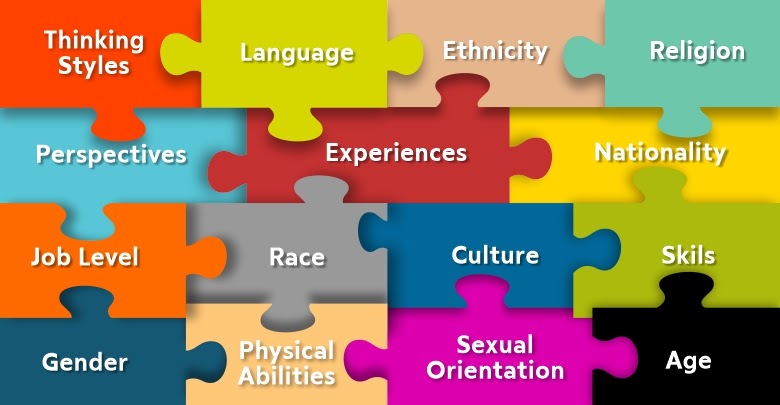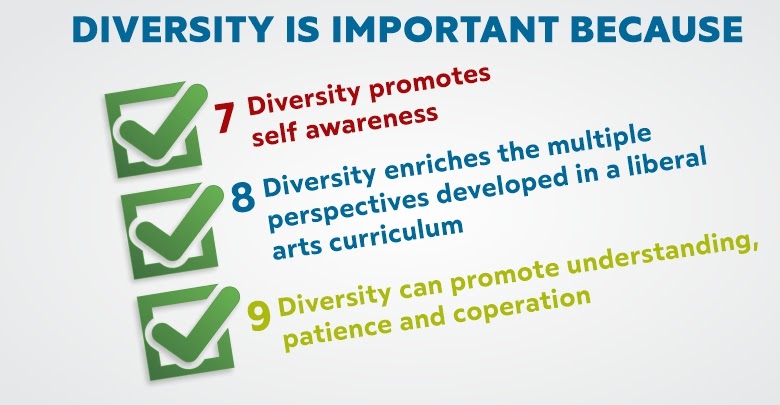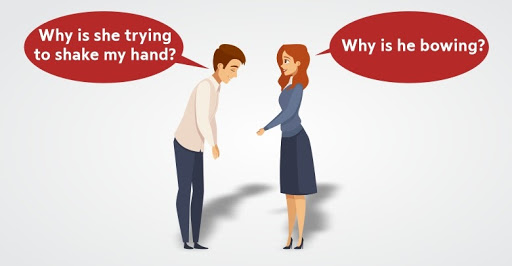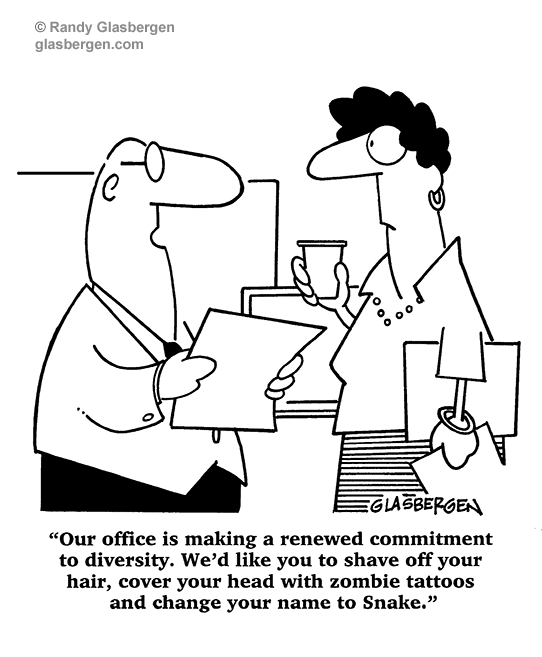Diversity awareness
The concept of diversity encompasses acceptance and respect. It means understanding that each individual is unique and recognizes our individual differences. These can be along the dimensions of race, ethnicity, gender, sexual orientation, socio-economic status, age, physical abilities, religious beliefs, political beliefs, or other ideologies. We live in a multicultural society and are embracing the values of various cultures that only strengthens our understanding and appreciation of the world. Interacting with people from a variety of groups widens our social circle by expanding the pool of people with whom we can associate and develop relationships with. The goal of diversity competence is to create awareness, increase sensitivity and promote personal reflection. We do promote diversity awareness as trainers, leaders or mentors, but we also have to take active participation in the process and to be an example. By experiencing diversity, we (as trainers) are laying the groundwork to be comfortable while working and interacting with a variety of individuals of all nationalities.

Diversity awareness is one’s ability to embrace the uniqueness of all individuals along several dimensions such as race, religious beliefs, ethnicity, age, gender, physical abilities, political beliefs, a socioeconomic status.
Diversity awareness skills extend beyond mere tolerance to encompass exploration of such individual differences, respecting them, and ultimately nurturing a healthy relationship with the individual despite the differences. With the help of these skills, teams and organizations foster a harmonious environment where mutual respect and equity are intrinsic.
Diversity means more than just acknowledging and/or tolerating differences. Diversity is a set of conscious practices that involve:
- Understanding and appreciating the interdependence of humanity, cultures, and the natural environment.
- Practicing mutual respect for qualities and experiences that are different from our own.
- Understanding that diversity includes not only ways of being but also ways of knowing;
- Recognizing that personal, cultural and institutionalized discrimination creates and sustains privileges for some while creating and sustaining disadvantages for others;
- Building alliances across differences so that we can work together to eradicate all forms of discrimination.
Therefore, diversity includes knowing how to relate to those qualities and conditions that are different from our own and outside the groups to which we belong, yet are present in other individuals and groups. These include but are not limited to age, ethnicity, class, gender, physical abilities/qualities, race, sexual orientation, as well as religious status, gender expression, educational background, geographical location, income, marital status, parental status, and work experiences. Finally, we acknowledge that the categories of differences are not always fixed but can also be fluid, meaning that we respect individual rights to self-identification, and we recognize that no one’s culture is intrinsically superior to another.

Why is diversity awareness important?
You may have a good grasp over the concept of diversity and how it helps a trainer thrive but that is not sufficient enough. Unless learners understand the significance of diversity policy and its positive impact on their performance, willingly embracing it, working with diverse groups may tend to become a liability instead of an asset.
This is exactly where diversity awareness skills play their role. Trainers with such skills will capitalize on the variety of backgrounds that their colleagues come from.

Diversity awareness issues
Having a diversity issue is not necessarily a bad thing. Doing nothing about it given you know the issue is where organizations go wrong (negligence). Being in denial about these issues does not make them go away. Ignorance is not a bliss inside or outside the courtroom. The real question is why do we have this issue and can we take action to correct it or improve the situation.
Disrespect
The key component in achieving a favorably diversified training is establishing teamwork and mutual respect among the participants. Acceptance of individual differences is essential in creating a positive and productive environment. Acceptance leads to respect and the ultimate opportunity for successful training.
Conflict
When prejudice, racism, discrimination and a lack of respect creep into an environment, conflict among participants becomes inevitable. If not distinguished, such animosity in the group can turn explosive or even violent. Training who provide a diversified group environment and provide sufficient diversity training often reduce or eliminate such occurrences.
Ethnic and Cultural Differences
Sadly, some individuals harbor unfair prejudices against people of different colors, cultures, ethnicity or religion than their own. Such prejudice should not be tolerated in the group – much less anywhere – and should be dealt with a firm and prompt manner. Some policies and appropriate additional training help build acceptance and respect among a well-diversified body.

Preventing Harassment and Eliminating Discrimination
Harassment can sometimes be an issue in a diversified training environment, but should never be tolerated. Recognizing harassment is the key to preventing and eliminating discrimination from the group. Even the slightest comment made in jest can be considered harassment if any – even remotely vague – racial, sexual or discriminatory connotation is made. For example, “I love Asian women” or “We should have included more white participants.”
Age Ranges and Generation Gaps
In a larger diversified international training, participants are often members who range in age from teenagers to senior citizens. Inevitably, generation gaps can become an issue and the age differences can trigger “cliques” and separation of the group as a unit. Bridging the gap between multiple generations of participants can sometimes become an issue for the trainers attempting to establish teamwork.
Disabilities
Unfortunately, participants who are mentally or physically handicapped sometimes encounter discriminatory behavior from insensitive members of the group. In some cases, trainers innocently overlook the handicapped participants` needs, such as ramps, special food or special needs equipment. Creating a fair and comfortable work environment for disabled participants is important in diversified training.
Consistency in Training and Practices
Diversity training and practices are not just a course or exam that participants take. Consistency and the daily practice of everyday-life-behavior are essential in molding a positive and productive lifestyle.
How to improve diversity awareness as a skill
Knowing the several benefits (to the organizational and individual personal growth) of a healthy work environment that they help to develop, following are some helpful tips for improving your diversity awareness skills:
- Frequent communication. Communication is your key to achieving the level of transparency and openness required for diversity awareness. Try to be more inquisitive in order to learn about the backgrounds of your colleagues and participants (in a matter of time), and also accept questions about your background without being unwarrantedly defensive. This will result in increased awareness, understanding, and empathy.
- Avoid the clustering of people with similar backgrounds. If you are the trainer/leader, enforce rules such that people with diverse backgrounds, instead of people with similar backgrounds, share the same space. If you are seeking to improve your own diversity awareness skills, try to willingly pair up with individuals with a different background than yours.
- Lead by example. Whether you are the trainer/leader or not, share your own stories with your participants to show them that it is alright to be open about one’s unique background. Also, take immediate action against discrimination. It encourages them to accept the uniqueness of others while maintaining their own cultural identity.
Developing Diversity Competence
To help us move “off automatic” and begin to value differences, we need to develop Diversity Competence. Diversity Competence consists of four areas:
- Awareness
- Knowledge
- Skills
- Action or Behavior
Awareness
- Recognize differences as diversity rather than abnormal behavior or inappropriate responses to the environment.
- Respect the benefits of diverse values and behaviors to people and the organization.
- Accept that each culture finds some values more important and some behaviors more desirable than others.
- Understand the effect that historic distrust has on present-day interactions.
- Have a clear sense of your individual culture.
- Recognize your own ethnocentricity—how you stereotype, judge, discriminate and your emotional reactions to conflicting cultural values.
- Understand how the culture of your organization affects those whose culture is different.
- Recognize the similarities that are shared across the “human culture”, regardless of the differences that exist among individual cultures and groups. These include, but are not limited to desire for safety, good health, education and well-being of our children, love, and belongingness, self-esteem (feeling of worthiness), and the ability to pursue and achieve our potential.
Knowledge
- Learn factual information about other cultures and groups with different backgrounds.
- Read an article or book about a cultural or social group different from your background. Compare your views with those of the author.
- See a movie about other cultural lifestyles. Compare how you live your life to what you’ve seen on film.
- Read about cross-gender differences in communication styles.
- Attend a cultural event, celebration, or holiday program of a different culture that you have never experienced before. Compare the similarities and differences of this event/celebration to those of your cultural group. Find out the meaning behind every difference.
- Learn a new language.
- Interview a person from a different culture to learn about their culture. How did they grow up? What were the important messages passed on to family members? How are children viewed? Older people?
- Explore your family history and background. Where did your ancestors come from before arriving in this country? What are the special customs and traditions that were shared from generation to generation? Interview an older member of your family.
Skills
- Take personal responsibility for the way you respond to differences.
- Make continued and sincere attempts to understand the world from others’ points of view.
- Develop skills in cross-cultural communication.
- Develop problem-solving skills.
- Develop skills in conflict management.
Look for ways to work effectively with diverse groups of people.

Action/Behavior
- Teach others about cultural differences.
- Develop a mentoring relationship with someone from a different culture or identity group.
- Show more patience when working and interacting with people who have different learning styles than you.
- Integrate diversity issues as an ongoing topic in staff meetings at work.
- Develop a personal plan for continued learning toward diversity competency.
Dimensions of diversity
Diversity includes everyone since people differ from one another in many ways. In other words, there are many dimensions of diversity. The following are just a few dimensions of diversity:
- Gender
- Religious beliefs
- Race
- Marital status
- Ethnicity
- Parental status
- Age
- Education
- Physical and mental ability
- Income
- Sexual orientation
- Occupation
- Language
- Geographic location
As we can see, diversity is very broad in scope and it includes all of us.
However, some dimensions of diversity have more impact on the opportunities people have than others. The major dimensions of diversity can be categorized as primary and secondary dimensions.

The primary dimensions are unalterable and extremely powerful in their effect. The secondary dimensions are important in shaping us, but we have some measure of control over them.
When we see another person, we notice, make assessments, and make decisions about how to interact with that individual based on these nine factors. These reactions, based on split-second assessments of others, influence our relationships.
*[Why did I choose this tool?]
Regardless of our profession, at one point we will find ourselves surrounded by a group of people from diverse backgrounds. Our mission is to prepare the participants for the issue they might face. As a trainer this is an essential tool for experiencing and teaching diversity. Every group I have attended (as a participant or as a trainer) there were people with diverse backgrounds and from each of those groups we have learned something informally (besides the topic of the training). The researches consistently show that we learn more from people that are different from us, than we do from people who are similar to us.
Suggested Reflection Questions
Why do we need to be concerned about diversity?
How diversity influences our everyday life?
Is diversity challenging?
Other Ways to Practice
Making a Commitment to Diversity

(this can be used of a trainer`s personal development and/or be used in a training, whether the topic is related or not with diversity awareness)
Developing Diversity Competence is not a short-term venture, but you can get started today by committing to do one thing in the next 30 days to increase your understanding of diversity. Ask a family member or a friend to join you in this venture. Select one of the items suggested in the lists above under Awareness, Knowledge, or Skills, or take advantage of an upcoming event or opportunity that would increase your diversity competence. Follow the instructions on the Commitment to Diversity Plan form on the next page. Within 30 days, plan to meet and discuss what you learned with your “diversity buddy.”
Challenge
Choose one thing you will do in the next 30 days to increase your understanding of diversity. Jot it down in the two places indicated on the lower portion of this form. Select a friend or a relative to serve as your “diversity buddy” over the next 30 days. Exchange the bottom section of your diversity commitment plan with your “diversity buddy”. Carry out the activity you have selected within the next 30 days. At the end of the 30 days (or sooner), meet with your “diversity buddy” to discuss what you learned and how you increased your understanding of diversity.
Commitment to Diversity Plan form
Make a commitment to diversity, Take the following steps:
To increase my understanding of one aspect of diversity, I make a commitment to do the following activity within 30 days:
___________________________________________________________________________________
___________________________________________________________________________________
___________________________________________________________________________________
My Name: __________________________________________________________________________
Date: _______________________________
Buddy’s Name: ______________________________________________________________________
Date: _______________________________
To increase my understanding of one aspect of diversity, I make a commitment to do the following activity within 30 days:
___________________________________________________________________________________
___________________________________________________________________________________
___________________________________________________________________________________
My Name: __________________________________________________________________________
Date: _______________________________
Exercises:
For a group of learners – participants on a session
Learn what experience has shaped them
Create a safe space to learn about participant`s backgrounds and what has been vital in shaping their lives. Doing this as a group allows participants to learn new things about each other that otherwise might not come up, and the act of being open, honest and vulnerable is a great way to form bonds, increase empathy and improve relationships.
Ask everyone to think about the three most defining moments in their lives and draw them each on a separate paper.
Stick the paintings on the walls. Make the participants take an exhibition around. Lets them think what they are seeing. Are they relate to some of the paintings? Do they understand the paintings what are saying?
Make them form groups of 3 or 4 and whoever feels comfortable they can share their stories.




